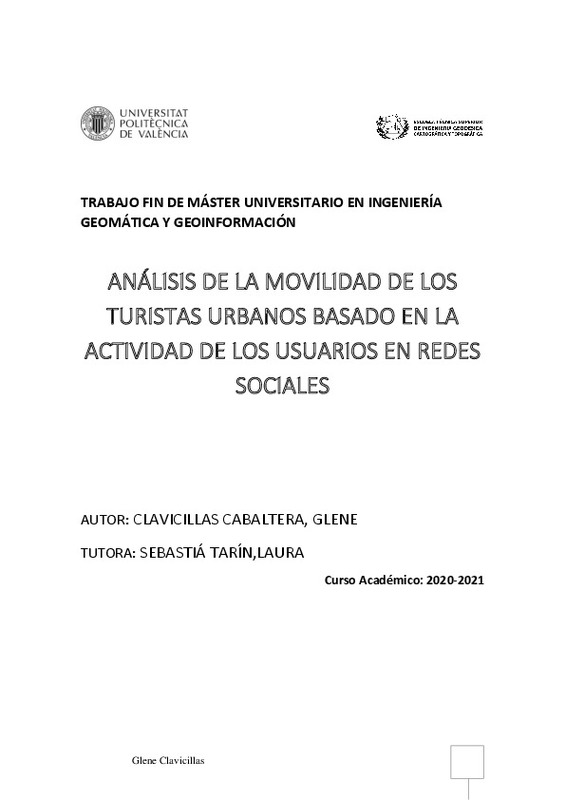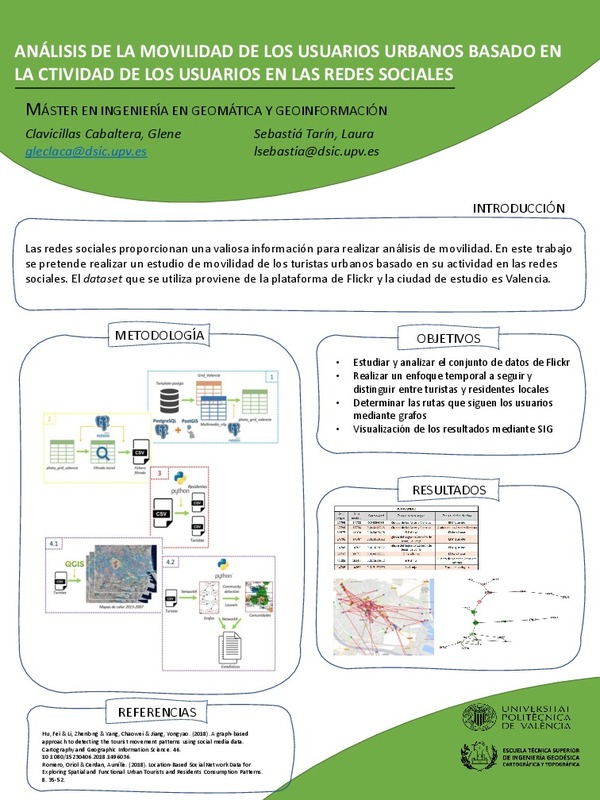JavaScript is disabled for your browser. Some features of this site may not work without it.
Buscar en RiuNet
Listar
Mi cuenta
Estadísticas
Ayuda RiuNet
Admin. UPV
Análisis de la movilidad de los turistas urbanos basado en las actividad de los usuarios en redes sociales
Mostrar el registro completo del ítem
Clavicillas Cabaltera, G. (2021). Análisis de la movilidad de los turistas urbanos basado en las actividad de los usuarios en redes sociales. Universitat Politècnica de València. http://hdl.handle.net/10251/173726
Por favor, use este identificador para citar o enlazar este ítem: http://hdl.handle.net/10251/173726
Ficheros en el ítem
Metadatos del ítem
| Título: | Análisis de la movilidad de los turistas urbanos basado en las actividad de los usuarios en redes sociales | |||
| Autor: | Clavicillas Cabaltera, Glene | |||
| Director(es): | ||||
| Entidad UPV: |
|
|||
| Fecha acto/lectura: |
|
|||
| Resumen: |
[ES] El objetivo de este trabajo consiste fundamentalmente en modelar cómo la actividad en las redes sociales de los turistas urbanos refleja su actividad en la ciudad. Para ello, se trabajará con datasets de Twitter de ...[+]
[EN] The objective of this work is mainly to model how the activity in social networks of urban tourists reflects their activity in the city. To do this, we will work with Twitter datasets from different cities with ...[+]
|
|||
| Palabras clave: |
|
|||
| Derechos de uso: | Reserva de todos los derechos | |||
| Editorial: |
|
|||
| Titulación: |
|
|||
| Tipo: |
|
recommendations
Este ítem aparece en la(s) siguiente(s) colección(ones)
-
ETSIGCT - Trabajos académicos [495]
Escuela Técnica Superior de Ingeniería Geodésica, Cartográfica y Topográfica








